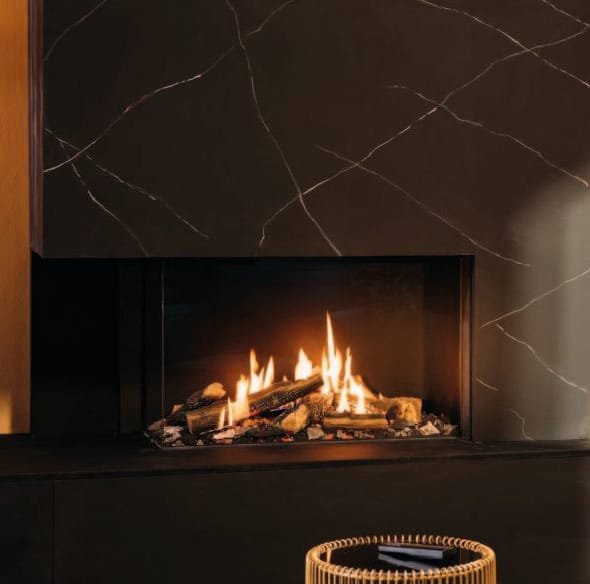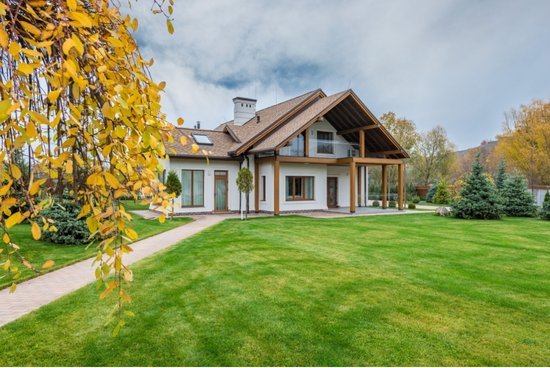Learn to identify essential chimney fire signs every homeowner should recognize to ensure safety and to prevent future fires and costly damage!
A chimney fire can be a frightening experience, but recognizing the signs of a chimney fire early can help you take swift action to protect your home and loved ones. Whether you’re enjoying a cozy evening by the fire or keeping your wood stove running smoothly during the heating season, it’s important to be aware of the subtle clues that a fire may be starting in your chimney. Here’s what to the most common signs to look out for and how to prevent any danger from a chimney fire.
Unusual Sounds: The Roar of a Fire
One of the first signs that something’s wrong is the sound your chimney makes. A slow burning chimney fire can create a roaring sound that might remind you of a freight train or loud crackling. This noise happens when the creosote buildup inside the chimney flue catches fire. As the creosote burns, it makes a rumbling noise that grows louder with intensity. If you hear this sound, it’s time to act quickly—get to safety and call the fire department. Slow-burning fires can sometimes escalate before you realize it, so don’t wait for things to get out of control.
Excessive Smoke or Flames Coming from the Chimney
Another key indicator of a chimney fire is the presence of smoke or flames where they shouldn’t be. If you notice dense smoke in your living room or outside your home or see flames coming from your chimney cap, roof, or along the exterior masonry, there’s a significant fire hazard. This is a sign that creosote is burning in the flue, and it can spread quickly if not addressed immediately. If you see any signs of flames or notice smoke escaping, make sure everyone evacuates the house immediately and calls for professional help.
Cracks and Damage to the Chimney Structure
After a chimney fire, it’s common to find visible damage to your chimney’s structure. Flue tiles might be cracked, and creosote deposits could be more noticeable or even fall into your fireplace or stove. The heat generated by the fire can weaken the chimney liner and cause cracks to form. These cracks not only reduce the effectiveness of your chimney but also create dangerous pathways for flames or toxic gases like carbon monoxide to escape into your home. If you find cracks or notice discoloration, it’s a sign that your chimney needs immediate attention.
Unusual High Temperatures Around the Chimney
If you notice that the exterior of your chimney or flue is unusually warm to the touch or even hot, it could be a sign of a chimney fire. Intense heat from the fire can radiate through the chimney structure and heat surrounding areas, including your roofing material or walls. If you feel excessive warmth around your chimney or notice extremely high temperatures, this is a serious warning sign that something is wrong. Don’t hesitate to call a professional if you’re unsure—this type of heat could cause severe damage if left unchecked.
Slow Burning Fires: The Silent Threat
Not all chimney fires are loud or fast. Sometimes, they start as a slow-burning fire that gradually increases in intensity. During these types of fires, creosote in the chimney flue burns slowly, creating thick smoke and a lot of heat. The fire may go unnoticed until it escalates. If you observe that your fire is burning unusually slowly or the smoke seems thicker than usual, this could be a sign of creosote buildup fast burning chimney fires or poor ventilation. It’s essential to stay on top of chimney maintenance and clean your chimney regularly to prevent these slow-burning fires from taking hold.
Visible Damage After a Chimney Fire
Once a chimney fire has been extinguished, it’s important to inspect your chimney for damage. Look for cracks inside the chimney, particularly along the masonry and flue tiles. If there is visible damage, such as flames or soot on the outside, your chimney may need repairs or a full cleaning. A damaged chimney damaged flue tiles can allow harmful gases, like carbon monoxide, to enter your home, or it could lead to further creosote buildup that increases the risk of future fires. Regular inspections are key to keeping your chimney in good working condition.
How to Prevent Chimney Fires and Keep Your Home Safe?
Prevention is the best strategy when it comes to chimney fires. The Chimney Safety Institute recommends having your chimney professionally inspected and cleaned regularly to ensure that no creosote buildup could catch fire. Chimney cleaning involves removing the thick, flammable creosote deposits that accumulate inside the chimney flue after burning wood or other fuels. Scheduling an annual inspection helps ensure that your chimney is in good working condition and that no dangerous buildup flaming creosote or cracks have formed. A chimney sweep will also check for signs of damage and ensure that the chimney liner is intact to prevent the escape of harmful gases.
Regular Chimney Maintenance is Key to Safety
Taking proper care of your chimney is crucial to maintaining a safe home. Regular chimney cleaning by GMT Home Services, chimney inspections, and repairs can go a long way in preventing chimney fires and ensuring that your fireplace or wood stove runs smoothly throughout the year. Always keep an eye out for the signs of a chimney fire—unusual sounds, excessive smoke, and high temperatures—and act immediately if you notice them. By staying proactive and keeping your chimney clean and well-maintained, you can enjoy the warmth and comfort of your wood-burning stove or fireplace without the risk of a dangerous chimney fire.
FAQs
How do you know if you are having a chimney fire?
Signs of a chimney fire include loud cracking or popping sounds, dense smoke, and an intense, hot smell. Flames or glowing embers might also shoot from the chimney top.
How likely is a chimney fire?
Chimney fires are relatively common in poorly maintained chimneys, especially in wood-burning systems. Creosote buildup and blockages significantly increase the risk.
How do you stop a chimney fire?
If safe, close the damper to cut off oxygen and call 911 immediately. If the flames are manageable, use a fire extinguisher or throw sand or baking soda into the fireplace to suppress them.
What starts a chimney fire?
Chimney fires typically start when creosote, a flammable residue from burning wood, ignites. Blockages from debris or animal nests can also trigger a fire.


